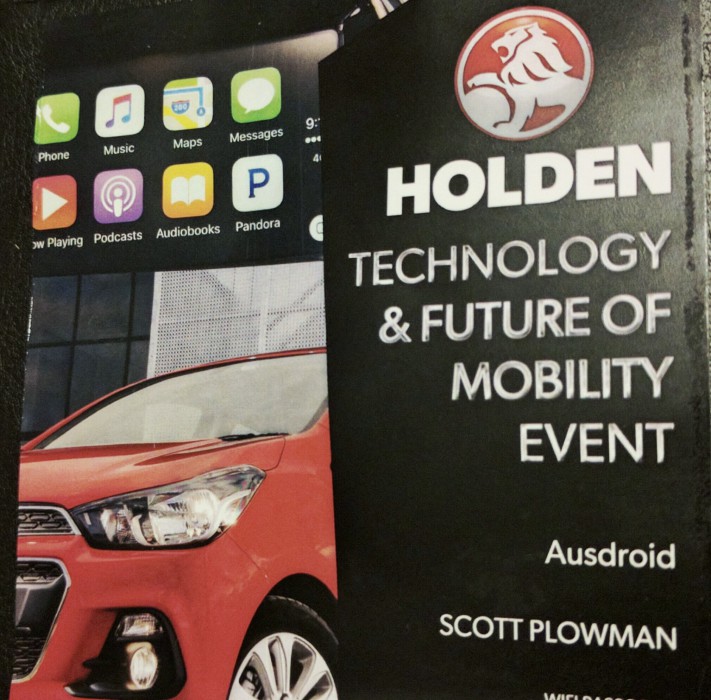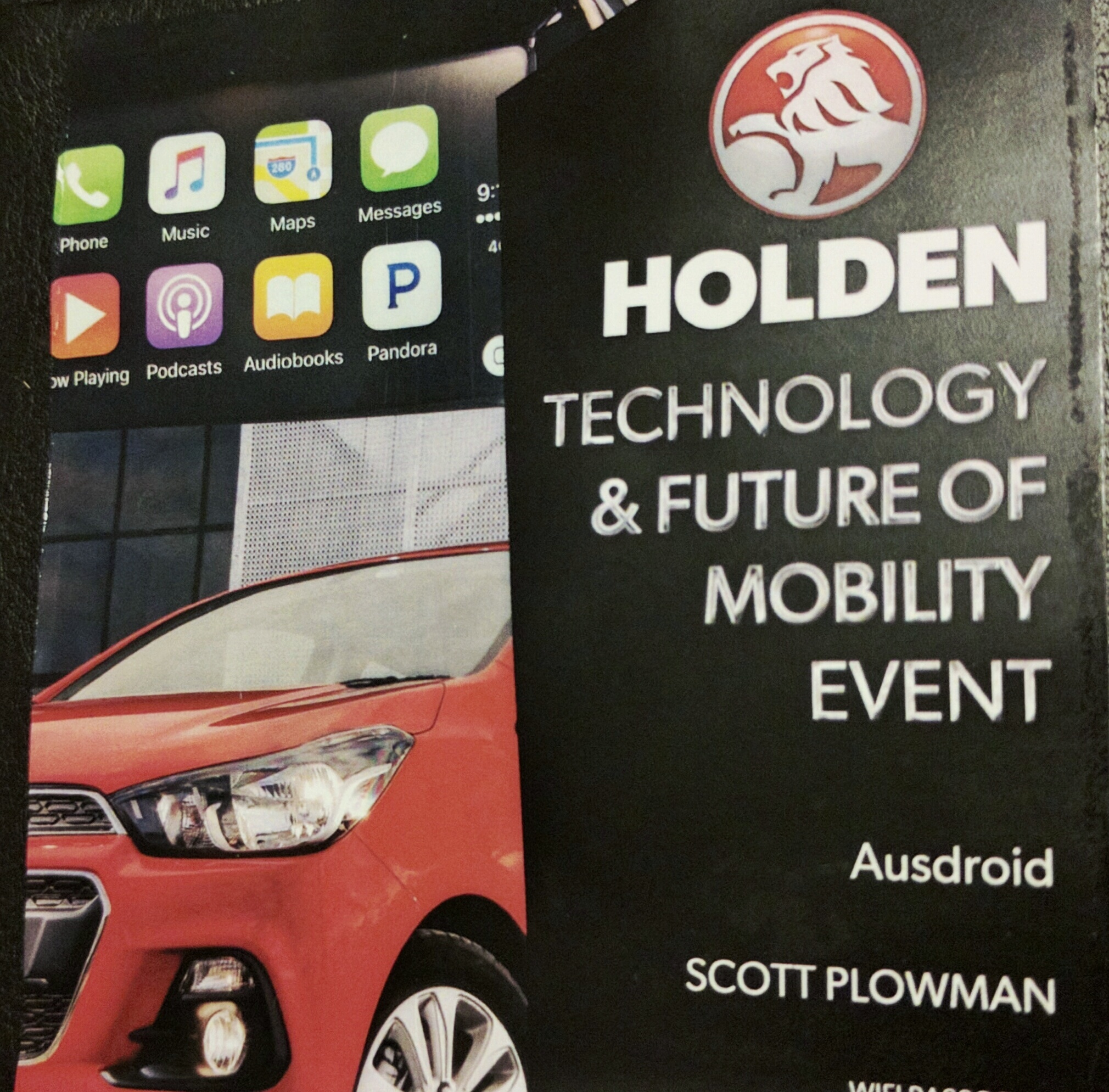 Ausdroid allows us to do some cool stuff, but sometimes we also get to play in other sandpits. Today I attended the Holden Technology focus event down here in Melbourne, where I got to check out not only their current technology but also their future plans on what we’ll be seeing in upcoming Holden and General Motors cars.
Ausdroid allows us to do some cool stuff, but sometimes we also get to play in other sandpits. Today I attended the Holden Technology focus event down here in Melbourne, where I got to check out not only their current technology but also their future plans on what we’ll be seeing in upcoming Holden and General Motors cars.
Today’s Tech
At Google IO 2014 Android Auto was announced, followed closely by Apple CarPlay. At the time there were quite a few car manufacturers mentioned as partners but since then many of them have been strangely silent. Slowly but surely we have seen Android Auto make it’s way into our everyday cars. Today we got to test out the new Holden infotainment system (still called MyLink) in the new Holden Spark (yet to be released to the public) and the 2016 Holden Captiva.
I have been highly critical of Holden’s MyLink system in the past but I can happily say that it is finally at a level that matches the rest of the car.
Gone is the sluggish, dull, inaccurate touchscreen as is the outdated, difficult-to-use maps. Here to stay is a bright, responsive multi-touch display and your choice of Google or Apple maps (via Android Auto or Apple Car Play). Via one of the dual USB ports in the dash connecting your Android device or iPhone will launch the respective projection. This is Ausdroid so I’ll focus on the Android Auto experience. Having had some experience with Android Auto recently I was looking forward to testing out the Holden Android experience.
The Holden experience I must say is not far different to that from Pioneer. Google have made Android Auto such that the manufacturers cannot do anything to it. It projects as is from the phone. The advantage of this is that all updates to Android Auto come from Google via your phone and the Play Store. The car manufacturers do not have any upkeep at all of the software. The advantage of using Holden’s Android Auto over an aftermarket version is that everything is seamless. All car settings are integrated well into a package that is eye catching and easy to use.
An implementation by Holden that I liked was the activation of Google voice recognition. Without having to take your eyes off the road Google voice recognition can be easily activated by pressing and holding on the source button on the steering wheel. All in all I was very impressed with the work Holden have put into their infotainment system and they have confirmed that Android Auto and Apple CarPlay compatibility will be coming in all their future cars (yes I did ask why it was not included in the new VFII Commodore because it has everything else and was met with bemusement but I would have traded up to one by now if they had done so- their new implementation is that good).
The Future
After taking a very nice Holden Insignia VXR for a spin to test out some of the tech including Apple CarPlay there was a panel discussion by some leading figures in the world of the autonomous connected car. The autonomous connected car is not a new thing. General Motors were introducing it into our minds way back in 1956 and if you have the time I recommend you watch it. While we did not quite have self-driving cars in 1976 it is not far away (while we are discussing promises, here is my hover board dammit?).
The autonomous connected car is termed a V2X connected vehicle. This is made up of connection between vehicles (V2V) and between the vehicles and the infrastructure (V2I) with a two-way flow between all of the above. The result is promising to lower congestion, lower accident rates and through all this be better for our environment and save us all money. All the tech in an autonomous connected car has been estimated to increase the cost of cars (at this stage) around $5000 but as economies of scale improve this cost will obviously improve. Combine all this with a car connected to the Internet (every GM car in USA has inbuilt 4G LTE connectivity) and you have yet another increment to the IoT.
By 2030 Holden say that all cars made will be autonomous connected cars.
While I love driving my car it may not be a choice. If autonomous connected cars decrease car accidents by as much as they say (79%) then will those of us who like to drive ourselves actually be able to afford the insurance to drive. The insurance companies may just take that decision away from us.
Today was a tough day in this Ausdroid writer’s career (/s). Not only did I get to experience some of the best in-car tech Holden has to offer but got an insight into the future of our vehicular experience. The current Android Auto experience is much better than any previous in-car infotainment I’ve experienced although it still lacks in certain places (keep an eye out for my upcoming review) but while it has taken a while to get here the future promises to be extremely bright.





